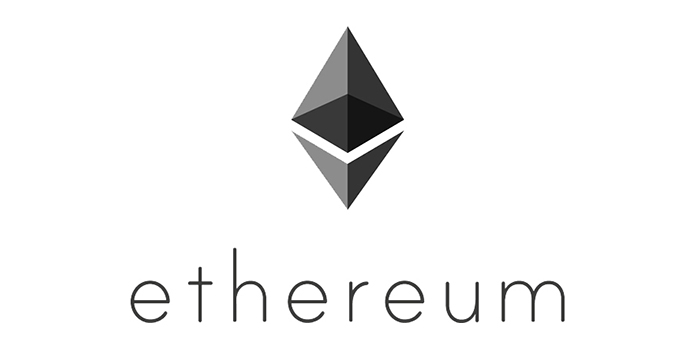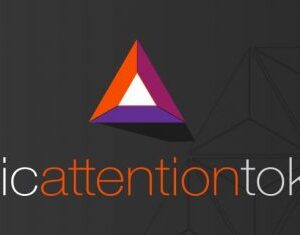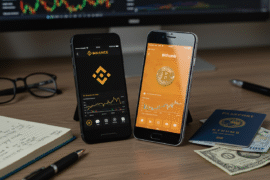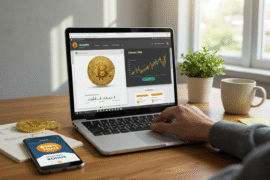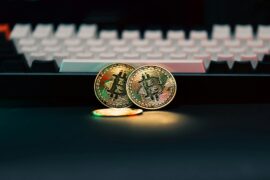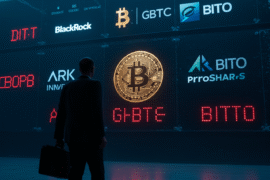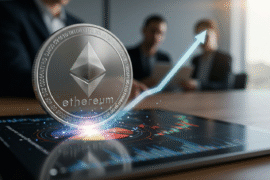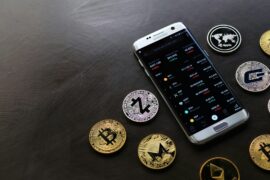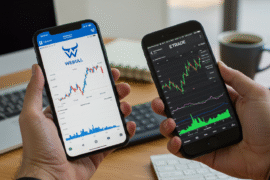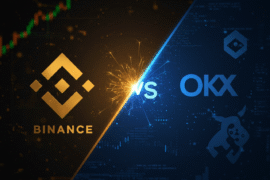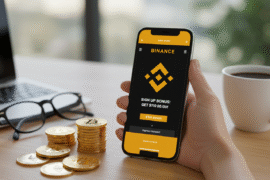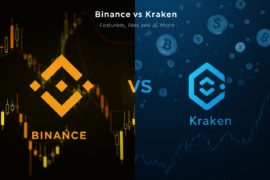This article may contain references to products or services from one or more of our advertisers or partners. We may receive compensation when you click on links to those products or services. Nonetheless, our opinions are our own.
The information presented in this article is accurate to the best of our knowledge at the time of publication. However, information is subject to change, and no guarantees are made about the continued accuracy or completeness of this content after its publication date.

Updated by Albert Fang
What is Ethereum?
If Bitcoin was the template for the first generation of cryptocurrencies, Ethereum (ETH) is the template for the second. While Bitcoin and many of the coins it inspired are primarily used as money, Ethereum and its crypto offshoots see this as function as secondary to the main goal: putting the whole world on the blockchain. That may not be so far from reality, either, given that their “smart contracts” technology is almost infinitely applicable.
If this all seems abstract, that’s because it is—the entire system is made up of rules that govern non-physical relationships between automatically-executed processes (in other words, code). Luckily, it’s easy to understand the core concepts with a little intuition. In the most general sense, think of Ethereum as a computer built out of many smaller computers. You can store information, access money, run programs, and more—given enough processing power, you could do almost anything.
How does Ethereum work?
On one level, it is a blockchain following the same general principles as Bitcoin. Each connected computer stores a copy of a ledger, which contains the entire transaction history. Each transaction is checked by a network of miners, who are giving their computing power to the network in the hopes of getting a reward for finding the next block. Once a block of transactions is confirmed (a new block takes twelve seconds to find, which is much quicker than Bitcoin’s ten minutes), it is permanently attached to the block before it and becomes part of the permanent record. You have ETH because the ledger credits them to the address you control.
Here’s the revolution, though: this is a blockchain that can run code. Chunks of code, or smart contracts, can range from very simple “If X then Y” statements to much more involved pieces of code. For example, Alice could agree to pay Bob 4 ETH in one day, set the smart contract to execute that transaction, and in 24 hours the smart contract would use Alice’s money to pay Bob. Or, Alice could agree to pay Bob for his used car, and Bob could agree to transfer the cryptographic e-title to Alice—but the contract will only settle if 1) Alice has put the agreed-upon amount of money into the contract; 2) Bob has put the e-title into the contract; and 3) A third party, Olivia, checks a blockchain-run car history database and confirms that the car has no reported mechanical problems.
Decentralized applications, or “DApps,” are apps that run on Ethereum (or other blockchains) using custom-built contracts. The developer simply needs to code in what he wants the app to do, tell it how to interact with the blockchain, and pay ETH to release and run the app. For example, take the app “CryptoKitties.” The developer designed a game with images of cute cats, gave each cat a unique cryptographic ID (just like a cryptocurrency), and set the CryptoKitties to follow the same rules as ETH tokens. The creator paid some ETH to get space on the blockchain, then started turning a profit as people went crazy over the adorable cats and started buying them. At one point, this app took over so much of the blockchain that it slowed down everyone else’s transactions.
To summarize:
1. Ethereum is essentially a decentralized computer/crypto that offers incentives for people to connect.
2. It runs on a blockchain, but the blockchain can also run code, called smart contracts.
3. This code can go from very simple to very complex and can be run on the decentralized network.
4. These decentralized apps are more reliable, less hackable, more space-efficient, and more transparent than traditional programs.
How to buy Ethereum at a legit cryptocurrency exchange?
The most popular and well-respected cryptocurrency exchanges are Coinbase, Binance, and Crypto. They have been in the industry since the inception of crypto. To buy the crypto you are looking for, simply register for any of the cryptocurrency marketplaces below and claim the bonus sign-up offer as well.
Best no-fee crypto app for free mobile trading?
Kraken is a commission-free cryptocurrency exchange trading platform for users around the world. The platform supports well over 50+ cryptocurrencies and continues to add to their robust crypto portfolio.
Recent developments
“Metropolis Byzantium,” the first half of step three on the roadmap, was released in October 2017. The second half, “Metropolis Constantinople,” will probably be released in 2018, and is likely to contain major changes to the blockchain’s core mechanics.
Fun fact
Vitalik Buterin, the Russian-Canadian creator of Ethereum, was only 19 when he wrote its whitepaper, and he was just 17 when he first started exploring cryptocurrencies.

Reviewed and edited by Albert Fang.
See a typo or want to suggest an edit/revision to the content? Use the contact us form to provide feedback.
At FangWallet, we value editorial integrity and open collaboration in curating quality content for readers to enjoy. Much appreciated for the assist.
Did you like our article and find it insightful? We encourage sharing the article link with family and friends to benefit as well - better yet, sharing on social media. Thank you for the support! 🍉
Article Title: How to Buy Ethereum on Crypto.com Exchange Trading App
https://fangwallet.com/2018/03/07/what-is-ethereum-eth-crypto-for-dummies-ethereum-potential-value/The FangWallet Promise
FangWallet is an editorially independent resource - founded on breaking down challenging financial concepts for anyone to understand since 2014. While we adhere to editorial integrity, note that this post may contain references to products from our partners.
The FangWallet promise is always to have your best interest in mind and be transparent and honest about the financial picture.
Become an Insider

Subscribe to get a free daily budget planner printable to help get your money on track!
Make passive money the right way. No spam.
Editorial Disclaimer: The editorial content on this page is not provided by any of the companies mentioned. The opinions expressed here are the author's alone.
The content of this website is for informational purposes only and does not represent investment advice, or an offer or solicitation to buy or sell any security, investment, or product. Investors are encouraged to do their own due diligence, and, if necessary, consult professional advising before making any investment decisions. Investing involves a high degree of risk, and financial losses may occur including the potential loss of principal.
Source Citation References:
+ Inspo
